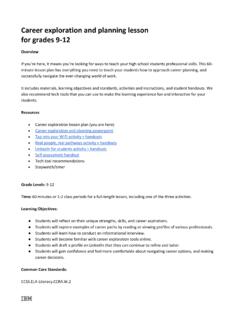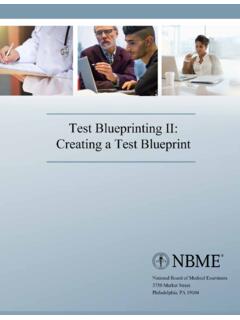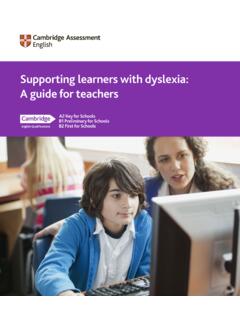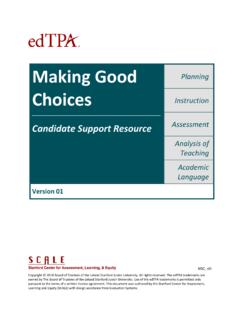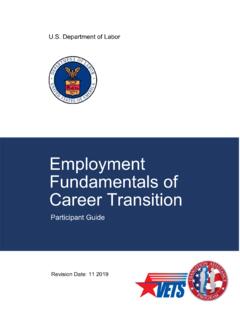Transcription of Strategies for Effective Lesson Planning - GitHub Pages
1 Strategies for Effective Lesson Planning Stiliana Milkova Center for Research on Learning and Teaching A Lesson plan is the instructor's road map of what students need to learn and how it will be done effectively during the class time. Before you plan your Lesson , you will first need to identify the learning objectives for the class meeting. Then, you can design appropriate learning activities and develop Strategies to obtain feedback on student learning. A. successful Lesson plan addresses and integrates these three key components: Objectives for student learning Teaching/learning activities Strategies to check student understanding Specifying concrete objectives for student learning will help you determine the kinds of teaching and learning activities you will use in class, while those activities will define how you will check whether the learning objectives have been accomplished (see Fig.)
2 1). Steps for Preparing a Lesson Plan Below are six steps to guide you when you create your first Lesson plans. Each step is accompanied by a set of questions meant to prompt reflection and aid you in designing your teaching and learning activities. (1) Outline learning objectives The first step is to determine what you want students to learn and be able to do at the end of class. To help you specify your objectives for student learning, answer the following questions: What is the topic of the Lesson ? What do I want students to learn? What do I want them to understand and be able to do at the end of class?
3 What do I want them to take away from this particular Lesson ? Once you outline the learning objectives for the class meeting, rank them in terms of their importance. This step will prepare you for managing class time and accomplishing the more important learning objectives in case you are pressed for time. Consider the following questions: What are the most important concepts, ideas, or skills I want students to be able to grasp and apply? Why are they important? If I ran out of time, which ones could not be omitted? And conversely, which ones could I skip if pressed for time? (2) Develop the introduction Now that you have your learning objectives in order of their importance, design the specific activities you will use to get students to understand and apply what they have learned.
4 Because you will have a diverse body of students with different academic and personal experiences, they may already be familiar with the topic. That is why you might start with a question or activity to gauge students' knowledge of the subject or possibly, their preconceived notions about it. For example, you can take a simple poll: How many of you have heard of X? Raise your hand if you have. You can also gather background information from your students prior to class by sending students an electronic survey or asking them to write comments on index cards. This additional information can help shape your introduction, learning activities, etc.
5 When you have an idea of the students' familiarity with the topic, you will also have a sense of what to focus on. Develop a creative introduction to the topic to stimulate interest and encourage thinking. You can use a variety of approaches to engage students ( , personal anecdote, historical event, thought-provoking dilemma, real-world example, short video clip, practical application, probing question , etc.). Consider the following questions when Planning your introduction: How will I check whether students know anything about the topic or have any preconceived notions about it?
6 What are some commonly held ideas (or possibly misconceptions) about this topic that students might be familiar with or might espouse? What will I do to introduce the topic? (3) Plan the specific learning activities (the main body of the Lesson ). Prepare several different ways of explaining the material (real-life examples, analogies, visuals, etc.) to catch the attention of more students and appeal to different learning styles. As you plan your examples and activities, estimate how much time you will spend on each. Build in time for extended explanation or discussion, but also be prepared to move on quickly to different applications or problems, and to identify Strategies that check for understanding.
7 These questions would help you design the learning activities you will use: What will I do to explain the topic? What will I do to illustrate the topic in a different way? How can I engage students in the topic? What are some relevant real-life examples, analogies, or situations that can help students understand the topic? What will students need to do to help them understand the topic better? (4) Plan to check for understanding Now that you have explained the topic and illustrated it with different examples, you need to check for student understanding how will you know that students are learning?
8 Think about specific questions you can ask students in order to check for understanding, write them down, and then paraphrase them so that you are prepared to ask the questions in different ways. Try to predict the answers your questions will generate. Decide on whether you want students to respond orally or in writing. You can look at Strategies to Extend Student Thinking, to help you generate some ideas and you can also ask yourself these questions: What questions will I ask students to check for understanding? What will I have students do to demonstrate that they are following?
9 Going back to my list of learning objectives, what activity can I have students do to check whether each of those has been accomplished? An important strategy that will also help you with time management is to anticipate students' questions. When Planning your Lesson , decide what kinds of questions will be productive for discussion and what questions might sidetrack the class. Think about and decide on the balance between covering content (accomplishing your learning objectives) and ensuring that students understand. (5) Develop a conclusion and a preview Go over the material covered in class by summarizing the main points of the Lesson .
10 You can do this in a number of ways: you can state the main points yourself ( Today we talked about ), you can ask a student to help you summarize them, or you can even ask all students to write down on a piece of paper what they think were the main points of the Lesson . You can review the students' answers to gauge their understanding of the topic and then explain anything unclear the following class. Conclude the Lesson not only by summarizing the main points, but also by previewing the next Lesson . How does the topic relate to the one that's coming? This preview will spur students'.
